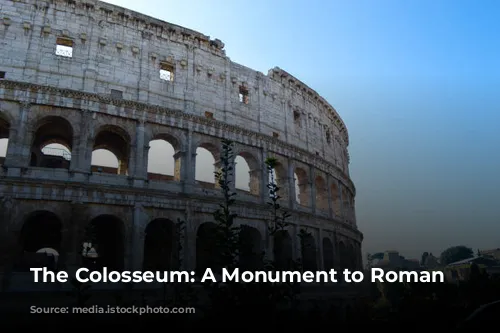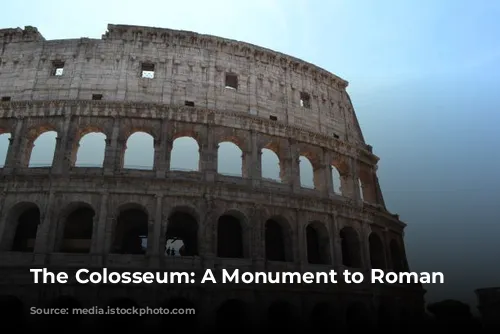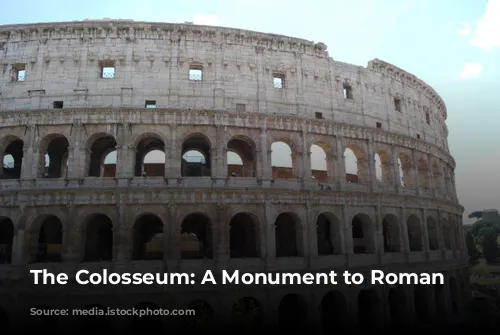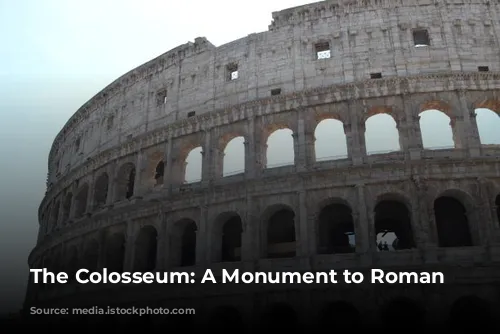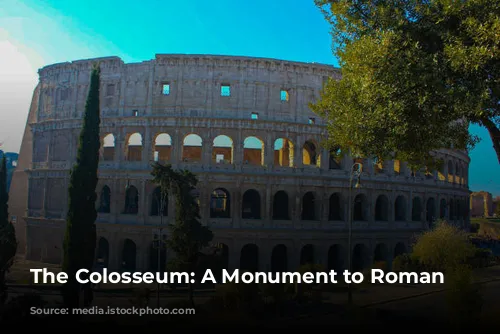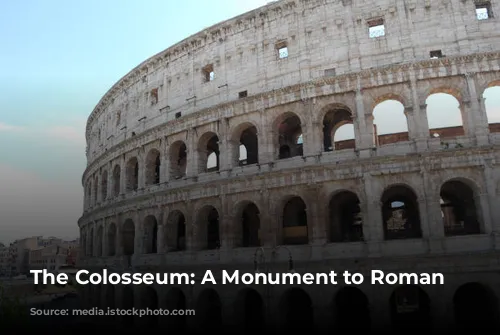The Flavian Amphitheatre, more commonly known as the Colosseum, stands as a testament to Roman engineering and architectural brilliance. This iconic structure, the largest amphitheatre in the Roman world, was started by Emperor Vespasian of the Flavia family and inaugurated by his son Titus in 80 A.D. Its construction was a monumental undertaking, completed in a remarkably short span of ten years.
A Grand Opening and a Timeless Legacy
The Colosseum’s inauguration was a spectacular affair, lasting one hundred days and featuring an array of thrilling spectacles. The arena was even flooded for “naumachiae,” re-enactments of naval battles that mirrored the grand naval clashes of Roman history. The sheer scale and variety of these events captivated the Roman populace and solidified the Colosseum’s place as a center for entertainment and social gathering.
The Colosseum: A Name Steeped in History
While the official name is the Flavian Amphitheatre, the world knows it as the Colosseum. The origin of this name is shrouded in mystery, with some attributing it to the “Colossus,” a massive statue of Emperor Nero that once stood nearby. However, the most widely accepted explanation traces the name back to a medieval prophecy by Venerable Beda, who stated, “Rome will exist as long as the Colosseum does; when the Colosseum falls so will Rome; when Rome falls so will the world.” This prophecy highlights the Colosseum’s enduring symbolic significance as a pillar of Roman power and civilization.
A Masterpiece of Roman Architecture
The Colosseum is an awe-inspiring example of Roman engineering and architectural prowess. This elliptical structure, meticulously crafted from gleaming travertine stone, featured four floors and eighty arches on each of the first three levels. These arches were adorned with statues, further enhancing the structure’s grandeur.
The key to the Colosseum’s construction lies in the Romans’ mastery of the arch, a structural element that allowed them to distribute the weight of massive constructions effectively. This same architectural principle, evident in Roman aqueducts, was applied in the Colosseum’s design.
A Glimpse into the Colosseum’s Past
Today, we see only a skeletal outline of the once magnificent Colosseum. The passage of time and the ravages of nature have left their mark, with three-fifths of the outer brick wall missing. In the Middle Ages, when the arena fell into disuse, its stones were plundered to construct other Roman landmarks, such as the Barberini Palace, Piazza Venezia, and even St. Peter’s Basilica.
A Place for Entertainment and Spectacle
The Colosseum’s immense size allowed it to accommodate up to 70,000 spectators, who were seated according to their social status. The seating arrangement mirrored the social hierarchy of ancient Rome, with commoners occupying the upper tiers, while senators, priests, and the emperor held seats closer to the arena.
The Colosseum also provided its audience with ingenious protection from the sun. A massive linen awning, known as the “Velarium,” was suspended by ropes and winches, creating a vast canopy over the arena. The deployment of this awning required the synchronized efforts of 100 sailors from the Imperial fleet, demonstrating the Roman Empire’s prowess in logistics and engineering.
The Gladiatorial Games: A Thrilling Display of Skill and Courage
The Colosseum’s most famous spectacles were the gladiatorial games, which captivated audiences with their blend of skill, courage, and spectacle. The arena floor, once a mix of brick and wood, has since vanished, revealing the subterranean chambers that housed the elaborate equipment used to stage these events.
These subterranean levels housed lifts and hoists that were used to raise animals and gladiators through trapdoors, creating dramatic entrances for the crowd. The Romans also utilized a sophisticated system of hinges and lifts to raise set-designed backdrops, adding an element of theatrical production to the gladiatorial games.
The Colosseum: A Window into Roman Culture
The gladiatorial games served as a powerful tool for fostering a sense of unity between the Roman people and their leaders. The spectacles provided a much-needed distraction from the political tensions of the day, while also showcasing the Roman Empire’s might and grandeur.
The games were a blend of both symbolism and reality, with events ranging from mock battles to ferocious hunts. While the hunts featured carefully constructed landscapes and animals, some events were brutally real, leaving spectators with a visceral experience of Roman power.
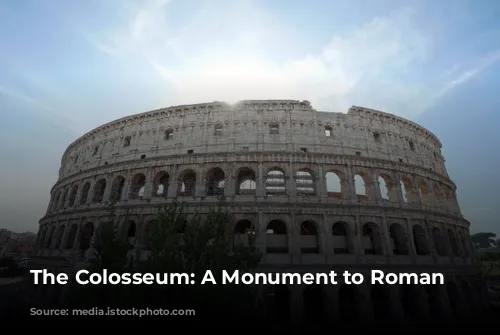
The Legacy of the Colosseum
The Colosseum’s enduring legacy speaks volumes about its historical significance. From its grandeur and architectural mastery to the visceral spectacles it once housed, this remarkable structure offers a glimpse into the heart of Roman civilization. Today, the Colosseum stands as a testament to the Roman Empire’s enduring influence, captivating visitors with its breathtaking beauty and the stories it whispers of a bygone era.
Despite its age and the damage it has endured, the Colosseum remains a powerful symbol of Roman power and ingenuity. For tourists and historians alike, the Colosseum offers a unique window into the past, allowing us to connect with a civilization that has left an indelible mark on the world. The Colosseum is not just a building; it is a timeless relic that continues to inspire awe and wonder centuries after its construction.
